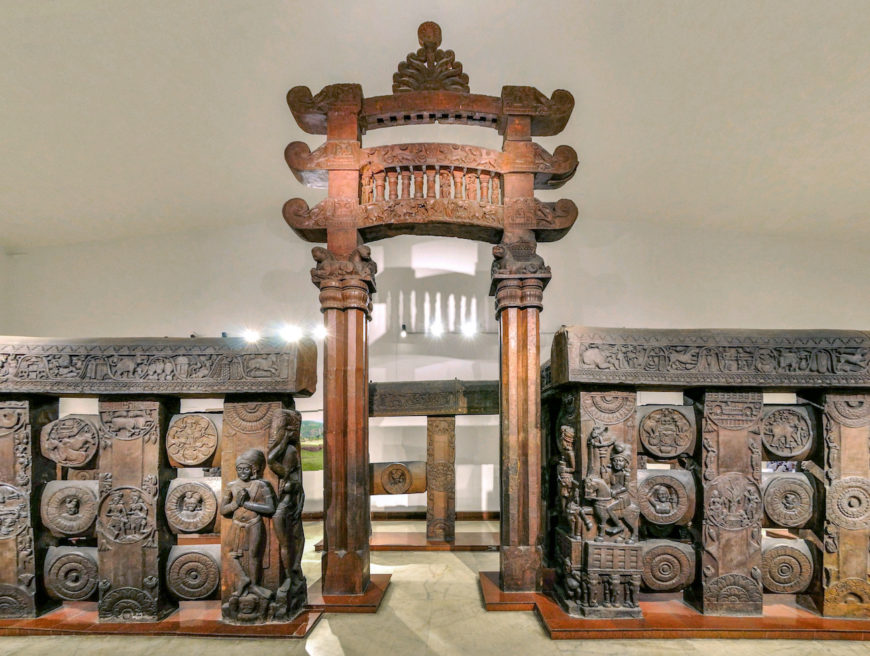
Reconstruction of the east gateway (torana) and railings (vedika) from Bharhut Stupa, Madhya Pradesh, c. 125 B.C.E.–c. 73 B.C.E., Sunga period, sandstone (Indian Museum, Kolkata; photo: Biswarup Ganaguly, CC BY 3.0)
Intricately carved sandstone vedika and toranas once surrounded the Bharhut stupa in Satna, Madhya Pradesh. These shallow relief carvings were made during the Shunga empire and are some of the earliest examples of narrative Buddhist art. They depict the teachings of the Buddha, scenes from the Jatakas and stories from the life of the historical Buddha Shakyamuni through iconography. Although many of these scenes make direct reference to the Buddha, and are characteristic of Buddhist art before the first century C.E., he is never represented in an anthropomorphic form in the reliefs, but instead, through symbolic motifs such as wheels, thrones, and footprints known as buddhapadas.
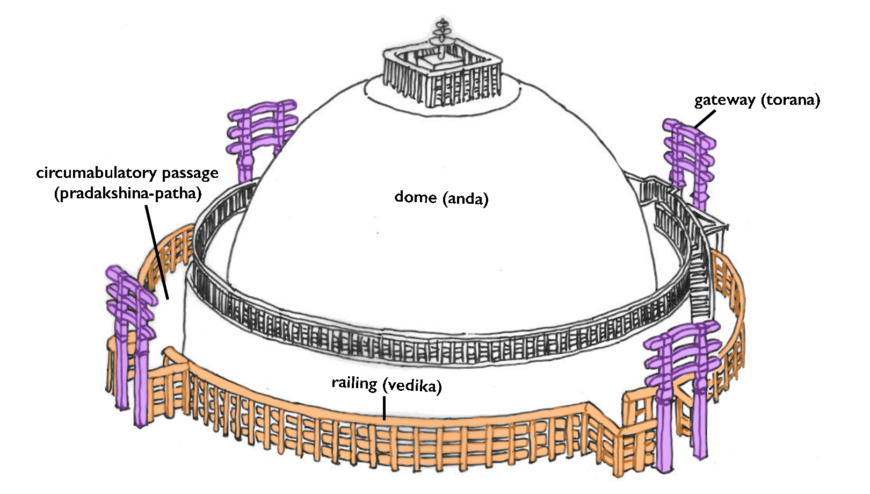
Drawing of a stupa with toranas, vedika, anda, and pradakshina-patha (underlying drawing: Wah Sang Song)
While the stupa itself is no longer standing, its remains, including part of the railing and the gateways, were recovered by Alexander Cunningham in 1873. Scholars believe that although the Bharhut stupa was erected around 250 B.C.E. during Ashoka’s reign, it was expanded nearly a century later, during the Shunga empire, with the addition of the vedika and toranas at the four entrances of the stupa.
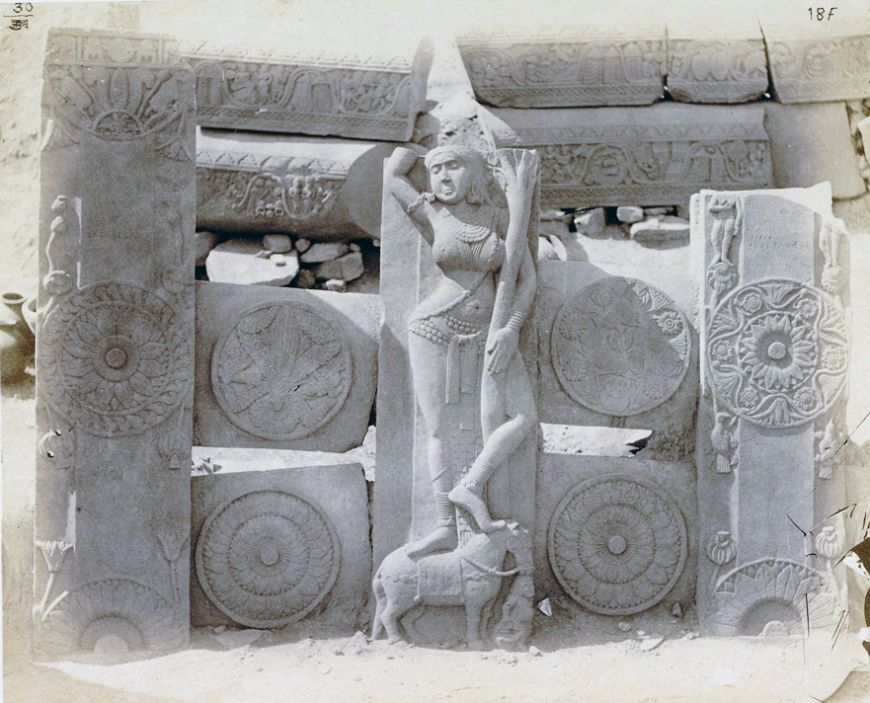
Segment of the vedika from the excavation by Alexander Cunningham, Bharhut Stupa, Madhya Pradesh, c. 125 B.C.E.–c. 73 B.C.E., Sunga period. Joseph Beglar David, Sculpture pieces excavated from the Stupa at Bharhut, part of south-west quadrant: railing fragments and a female figure, 1874, photograph (British Library)
The vedika
The Bharhut vedika stood at a height of 3 meters and a circumference of 20 meters. It carried carvings on every element of its structure, including the columns; roundels or medallions connecting one column to the next; and panels that ran the length of the vedika, connecting at its top. The relief carvings, which were carried out on both the interior and exterior surfaces of the vedika, range from narrative depictions of the Jatakas to carvings of individual figures, deities such as yakshas and yakshis along with various plant and animal motifs central to Buddhism, such as lotuses, elephants and monkeys.
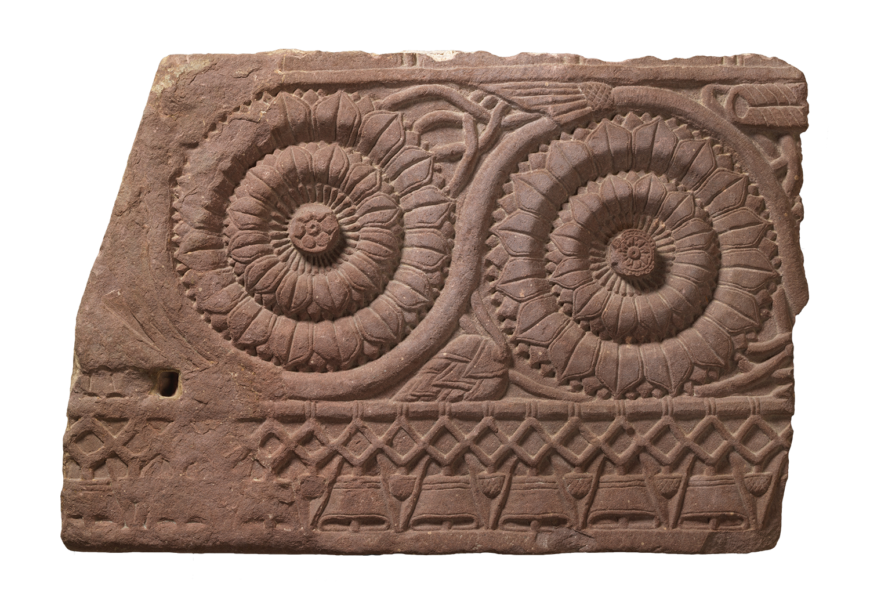
Two lotuses from the vedika, Bharhut Stupa, Madhya Pradesh, c. 1st century B.C.E., Sunga period, sandstone (The Metropolitan Museum of Art)
Each column of the vedika carried a different engraving, including human forms and animal motifs. A popular symbol was the lotus which, in some places, was depicted just as a flower, and in other places, with human forms emerging from its center. Columns also showed widely represented subjects in Buddhist art, such as Gajalaksmi and Chakravaka. Medallions that were placed between the columns usually carried depictions of the Jatakas to highlight legends of the Buddha’s previous births and his key virtues. Each medallion showcased a different episode. One of the most renowned depictions is that of the Mahakapi Jataka.
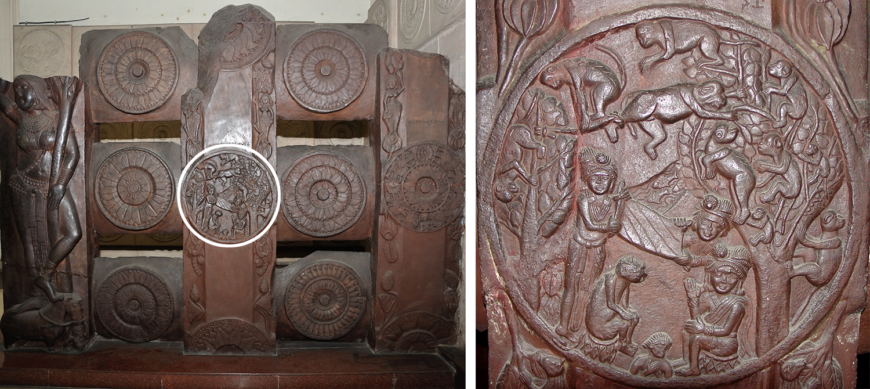
Left: Section of the vedika with the Mahakapi Jataka, from the Bharhut Stupa, Madhya Pradesh, c. 100 B.C.E., Sunga period, sandstone (Indian Museum, Kolkata; photo: Biswarup Ganguly, CC BY 3.0); right: Mahakapi Jataka (detail), from the Bharhut Stupa, Madhya Pradesh, c. 100 B.C.E., Sunga period, sandstone (Indian Museum, Kolkata; photo: Ken Kawasaki, CC BY-SA 3.0)
A continuous motif of the kalpataru extended the length of the vedika, issuing strings of gems, fruits, and flowers connecting the various narrative depictions. Despite the diversity of forms on the vedika, most carvings were accompanied by written inscriptions in Brahmi, making it easier to identify the subject.
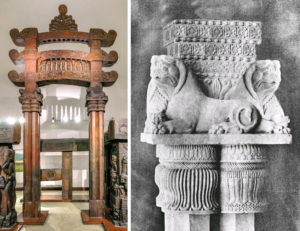
Left: Reconstruction of the eastern gateway (takarna) from the Bharhut Stupa, Mayadh Pradesh, c. 100–75 B.C.E., Sunga period, sandstone (Indian Museum, Kolkata; photo: Biswarup Ganguly, CC BY 3.0); right: Joseph David Beglar, Close view of lion capital of right pillar of East Gate of the Stupa of Bharhut, 1874, photograph (British Library)
The torana
The torana was also made of stone and carved on the exterior and interior sides. It is assumed that there were four toranas at the Bharhut stupa, even though remains of only the eastern torana have been found. Approximately 6 to 7 meters in height, the torana consisted of two columns that supported three carved architraves. The end of the architraves took the shape of a makara, extending outward with a slight arc. Motifs on the columns of the torana included animals, plants, abstract, and architectural elements that indicated the influence of Greece, among others from beyond the subcontinent, in Shunga architecture, along with inscriptions in Kharosthi stating that the torana was erected during the Shunga empire. However, these motifs are severely damaged. The torana is crowned with a lotus disc, on top of which is the dharmachakra with triratna on each side, symbolic of Buddhist teachings and reminiscent of Mauryan art.
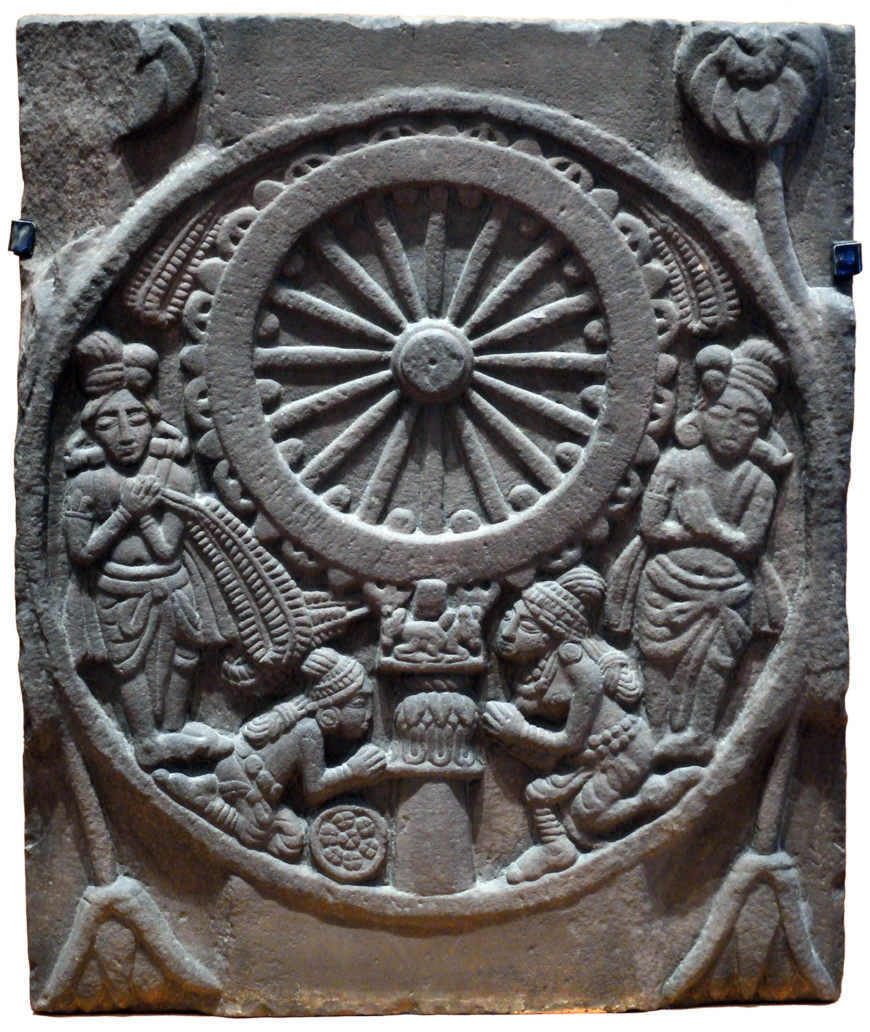
Worship of the dharmachakra, from the Bharhut Stupa, Madhya Pradesh, c. 125 B.C.E.–c. 73 B.C.E., Sunga period, sandstone (Indian Museum, Kolkata; photo: Biswarup Ganaguly, CC BY 3.0)
The Bharhut sculptures are known for their emphasis on narration as opposed to logic in terms of time, space, or scale. Certain portions of the narrative compositions are enhanced by manipulating scale without emphasis on the realism of the depiction. The sculptors often repeated the main figure throughout the episode in order to show the sequence of the narrative—a method that was also adopted in the Jatakas. The lack of individuality accorded to human figures is also another characteristic of sculpture under the Shunga empire.
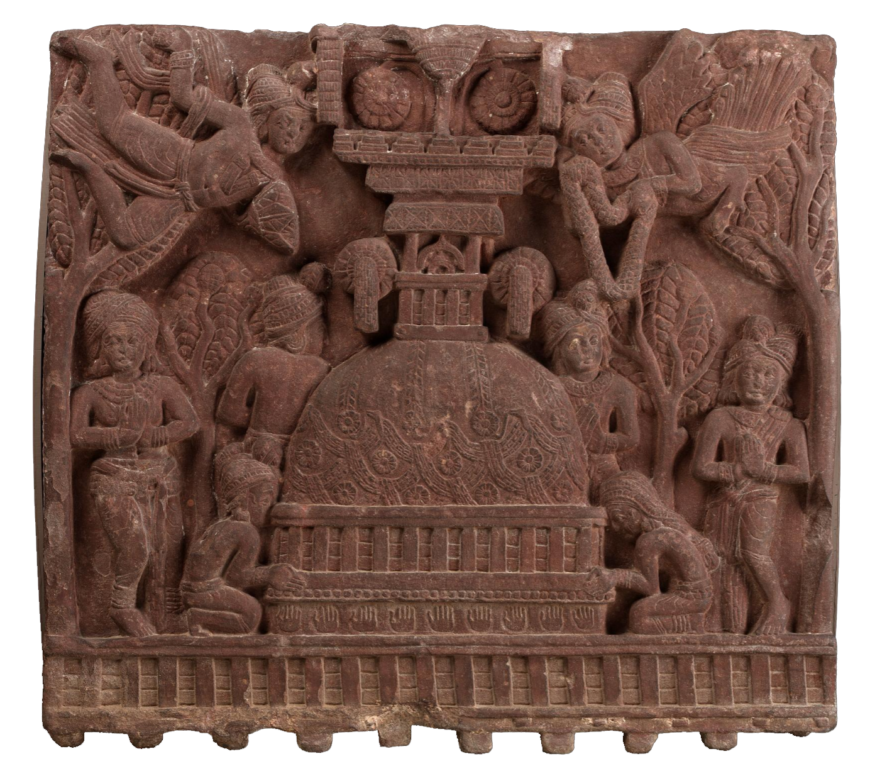
Sculptural fragment depicting a stupa and devotees, from Bharhut Stupa, Madhya Pradesh, c. 100–80 B.C.E., Sunga period, sandstone (Smithsonian, Freer Gallery of Art)
The depictions from the life and teachings of the Buddha, carved in shallow relief on the interior and exterior surfaces of the railings and the gateways, was meant to be viewed by a worshipper performing the pradakshina rites at the stupa. Owing to the textual inscriptions accompanying them, the sculptures have been indispensable to the historical tracing of early Buddhism in India as well as understanding Buddhist iconography.
The Bharhut stupa relief sculptures are often compared to the columns of Sanchi Stupa II, which were also carved during the Shuga empire. However, the ones at Bharhut are generally considered more intricate. Most of their remains have been moved to the Indian Museum in Kolkata, while some have been housed in the Allahabad Museum.
Drawing from articles on The MAP Academy





